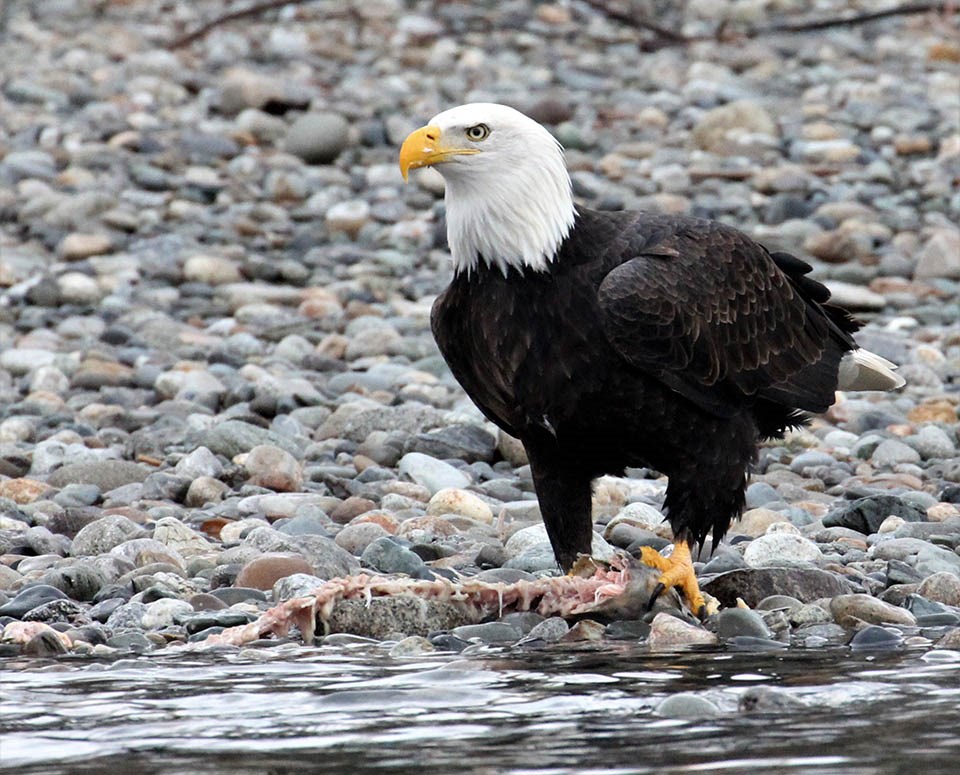Last updated: April 24, 2018
Article
Climate Change and Long-term Trends in Bald Eagle Winter Habitat Use on the Skagit River
Bald eagles (Haliaeetus leucocephalus) congregate seasonally in high densities on salmon spawning rivers across the Canada-USA boundary of the Pacific Northwest. One of the largest eagle concentrations is found in the Skagit River watershed, which connects the montane wilderness of North Cascades National Park to the Puget Sound. Climate change is expected to have profound and complex impacts on multiple parts of this system, including altering the timing of salmon and eagles in the system, reducing salmon productivity, and changing the timing and number of flood events.

NPS / Jason Ransom
Between the late 1970s and present, the peaks in chum salmon and bald eagle presence have gotten earlier at remarkably similar rates (about a half day earlier each year), suggesting synchronous responses within this trophic relationship. Yet the temporal relationship between chum salmon spawning and flood events, which remove salmon carcasses from the system, has not remained constant, resulting in an important shift wherein the peak of chum spawning now occurs before the first flooding event rather than after. The interval between peak chum and first flood event has been a significant predictor of bald eagle presence, and as this interval grew over time, bald eagle counts declined.
River section was also an important factor in determining eagle presence, with fewer flood events occurring in the river section experiencing direct hydroelectric flow management. Bald eagle winter use of the Skagit has steadily decreased since 2002, with the effects of climate change and hydroelectric management contributing to the complex human footprint on this otherwise natural ecosystem.
For More Information
Madeleine Rubenstein, PhD
U.S. Geological Survey
Jason Ransom, PhD
National Park Service
